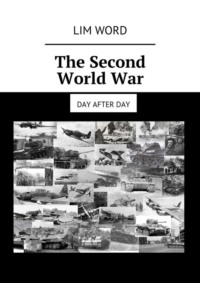
Полная версия
All in order. Win the war

Wehrmacht connections, in addition to combat vehicles, include large units of infantry, artillery, and also highly skilled repair brigades. Bulky (about 400 tanks) mechanized corps of the Red Army make marches of 300 km, losing at least only a mechanical breakdown of at least a third of the machines. The Soviet system of production of military equipment allegedly does not provide for the release, delivery, not even worth a half-word, of “small things” for repair, for example, gaskets or spare trains. Guidelines for driving and servicing the newest tanks, at this time – are classified even from potential mechanics. Sometimes, so carefully stored from the crews of the car, at the decisive moment refuel not with diesel fuel, but with gasoline. Approximately the same situation in the Air Force. In order to avoid any breakdown of equipment, getting accusations of wrecking, the most unfortunate consequences, the lower command is gradually sabotaging real military training. To realize how this or that thing works, one must at least break it down – it’s a simple, but an immutable truth. The fact that in the German educational units is punishable with salty jokes or a reprimand to a newcomer, the Red Army may end in execution. In the photo – the Soviet tanks BT-7 damaged and abandoned by crews. Weight 14 tons, crew 3 people, reservation 15—20 mm., Gun 45 mm., 1—3 machine guns. Speed, according to the design of the designers – the main advantage of the “high-speed” tank – on the tracks, on the highway 52 km. h, on wheels-72 km. h.

Perhaps, it can be argued that in a society of formal equality and the “territorial organization of the community”, any sign of distinction is qualified, no less than an accessory to a special caste. The Commander of the Red Army at all costs aspires to secede from the soldiers’ masses, although of course this does not go as far as in the Tsarist army. These maxims completely agree with the author’s observations during his time in the army of the Soviet, and then Russian. The German army from the middle of the nineteenth century implies, with (paradoxically) the strict observance of subordination, the attitude of the officer to the soldier as an equal to himself. Cohesion, a trusting relationship to each other, even, as it is said there, on the basis of blood ties, determines the high level of command and control. The photo shows the T-34-76 tank as part of a broken Soviet convoy. June-July, 1941 Weight 26 tons, crew 4 people, armor anti-ballistic 45 mm, in all directions in the horizontal plane (feed 40 mm.) Gun 76 mm., Course and paired with a gun machine gun. Speed along the highway 54 km. h, cross-country – 36 km. h (if you can turn on the desired gear)

So, there are counter tank fights near Kiev, sometimes successful, more often – no, massive frontal offensives on the positions of German anti-tank guns, maneuvering without communications and normal maps, separation from supply and repair lines. The result: by 30 June the Red Army loses 2,600 tanks, the Wehrmacht – 180 (irretrievably). The entire South-Western Front is crashing down. Stalin realizes the reality of such a picture: he is confronted with a group of German generals, with Hitler, compelled to answer their questions, unimaginably small and pitiful. This Dzhugashvili does not like, and he, even if not immediately, begins to make more or less correct decisions. The principle of eliminating problems, before – to see only the good, to discard all that is not part of smart plans. If someone talks about dying of hunger – they should be made to confess to espionage to Britain, and the question is solved. Twenty years after the Revolution, the people live worse than in 1914 – let’s say that this is not true, and the end is the matter. In Moscow (supply in a special category), after the cards have been canceled, thousands of queues are snapping around the stores – comrades from the NKGB warn the townsfolk without proper registration, that their next visit to the capital will be punished by article for speculation – and the crowds quickly disappear. Why bother with the actual development of the production of this boring consumer goods? The Scout believes that the Finns will not take the bread and salt of the Red Army – he should be summoned to Moscow and eliminated. It is the same with reports of the situation with the preparation of troops, or Hitler’s plans for an invasion. Those who express unpleasant, should be removed – and everything becomes pleasantly quiet.Photo – a German soldier examines a damaged tank T-34-76 on the roadside. Probably, the neighborhood of Kiev, July 1941..

But, this time, if we do not see the armored columns of the Wehrmacht, they do not cease to exist, and the mental image: Stalin before the smiling German military is becoming more real. The first orders are to “shoot”. It does not get better from that. Earlier, it was possible to establish ubiquitous deathly silence. Now the clanking of the caterpillars of German tanks is becoming more and more distinct. The commanders are getting cold hands, blood is pouring from the brain, resentment is rising in the chest – nothing more. Stalin must abandon executions, empty slogans, and work with the problem, now delving into the essence of what is happening. The control system is reconstructed into a real solution of the problems. This works from the second half of 1942, to May 45th, and, for two and a half years, allows you to get away from almost complete collapse to victory.Photo – burning T-34-76. At this stage of the war, “steel monsters” still do not impress the higher officers of the Wehrmacht. The Red Army had by this time only 60 trained crews, for these tanks. The Battle of Dubno-Lutsk-Brody, summer 1941

Kiev strategic defensive operation, summer 1941. Retreating and somewhat demoralized Soviet soldiers
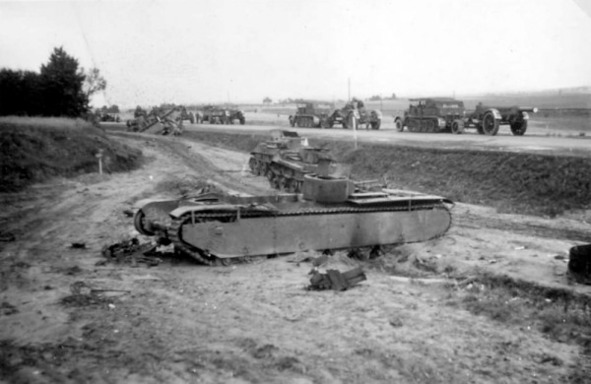
German cars and armored vehicles follow the T-38 tank with four towers demolished from the hull (there was only one). Ukraine, August 1941
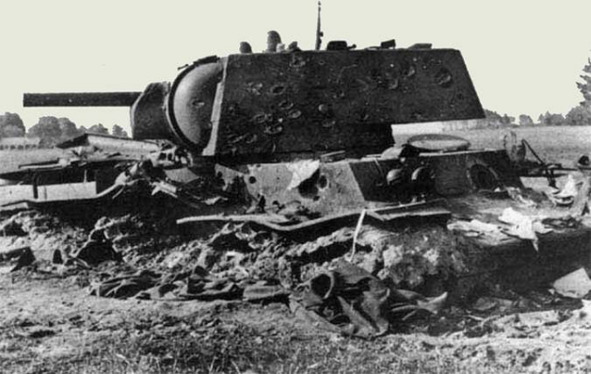
The Soviet tank KV-1, smashed by dozens of hits. July 1941, the south of the USSR. Armament: 76 mm. gun, 90—114 shells, three 7.62 DT machine guns (course, paired with a gun, aft). Booking: the forehead, the side of the hull is 75 mm., The forehead, the side of the tower is 75 mm. (protection from an armor-piercing shell of a 50-mm German cannon further 200 meters). Crew of 5 people. Weight 48 tons. Common problems with the transmission. Speed on the highway 34 km. h, the reserve for cross-country terrain is 120 km. Specific power 11.6 hp, ground pressure 0.77 kg. see From 1939 to 1942 produced 2770 machines.

German soldiers, the occupied territory of the USSR, summer 1941
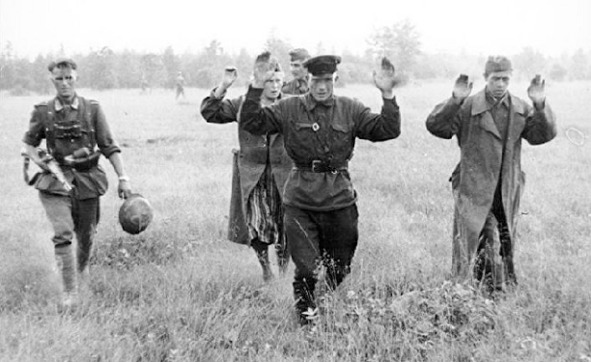
Captured Soviet soldiers

Captured in the Kiev Kettle Soviet soldiers

Neighborhoods of Kiev, 1941…

After the battle in the Kiev Kettle. In the background, for the dead Soviet soldiers – the Soviet tank BT-7
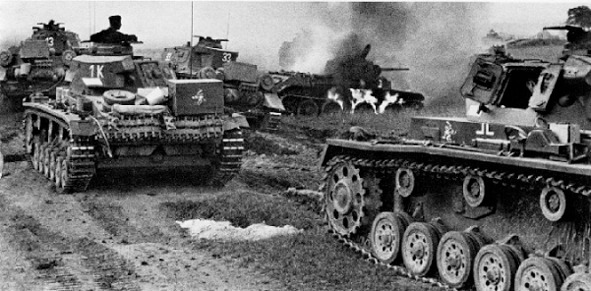
German armored column and burning T-34-76, Ukraine, 1941
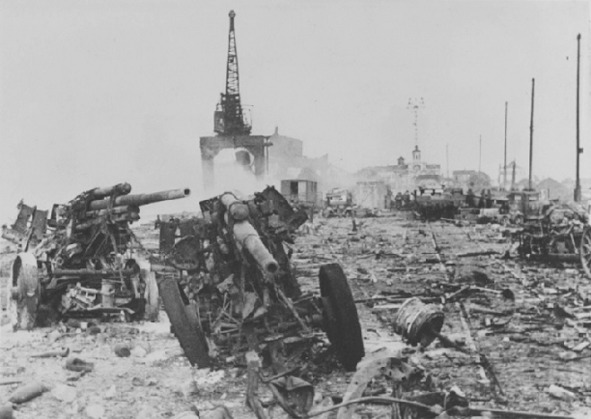
August 13, 1941 Odessa leaves the last railway train. The defense of a large Black Sea city is quite successful, but the Stavka makes a decision to evacuate troops to the Crimea. The losses of the Soviet and Allied German-Romanian troops are approximately equal – 18,000 men each side

The Anglo-Soviet invasion of Iran (operation “Consent”) will take place on August 25, 1941. Without declaration of war, the forces of the British Empire attack the Shah army from the Persian Gulf, the Soviet units from the Transcaucasus. The main strike force of the Red Army is about a thousand T-26 tanks, the Caspian Flotilla, the British – the fire of ship artillery and the Air Force. Many large cities, including Tehran, are bombed. Hundreds of civilians die. In the time of peace, the Iranian army is densely packed with money, but it is even more corrupt. The Iranian divisions soon lose control (the higher officers try to leave the battlefields), crumble, surrender to more or less honorable captivity. Some parts intend to fight to the end, however, on August 29 the shah gives the order to lay down their arms. In the photo – the Soviet military column enters the Iranian city of Tauris
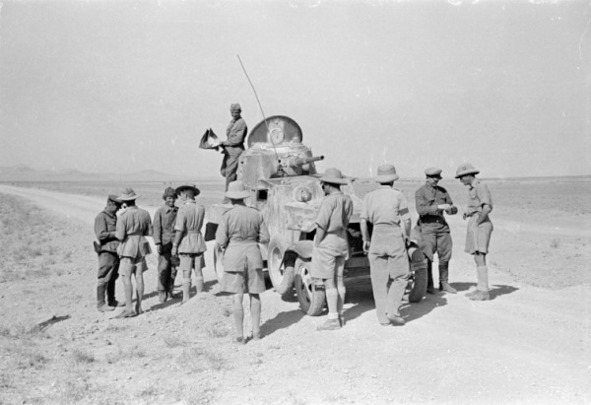
Already on September 17, the Red Army and British units are in Tehran. A month later, having formed a loyal government (of course, now no one connected with the Germans) the allies withdraw their forces from the capital. The country is divided into Soviet and British zones of influence. According to the peace treaty, Iran is declared an ally of Britain and the USSR. The parties undertake to withdraw all troops within six months after the cessation of all hostilities. This operation has a prehistory – the occupation of Iraq by Great Britain. Action: May, 1941, landing of the expeditionary force in Basra, air force strikes against airfields, railway and other facilities. The Germans are trying to come to the aid of their allies, but, why not without due enthusiasm and scope. As a result, the British establish control over Iraq’s oil fields, and in the future – they are given the opportunity to conduct a stable corridor for military supplies to the USSR. Photo – Soviet and British officers (in characteristic shorts and cork helmets) communicate near the armored car BA-10. Iran, August 1941.

Losses of the parties in the Anglo-Iraq war. Britain – 1200 people, 30 aircraft, Iraqis – 8,500 troops, as well as 20 German, 4 Italian aircraft. Losses during the occupation of Iran: the USSR – 50 people irretrievably, 3 aircraft. Britain – 25 people, 8 aircraft. Iran – 800 troops and 300 civilians. The outcome of the operation “Consent” is the almost unimpeded delivery of more than 5 million tons of military cargo to the belligerent USSR. A small additional bonus to the Union – a significant part of the grain harvest of Northern Iran is spent on subsistence for the army. But now, in the autumn of 1941, the seizure of a considerable country of the East seems to be only a small drop of honey in a huge barrel of tar.Photo – British correspondent Alan Michi talks to the wounded in the course of the battle with the Iranians, a Soviet officer

The defense near Smolensk, 1941, July 10 – September 10. In the background – tanks T-26

The offensive of the German fascist troops near Smolensk, autumn 1941. Infantry with all the equipment, mortar men and T-4 tank of the first releases
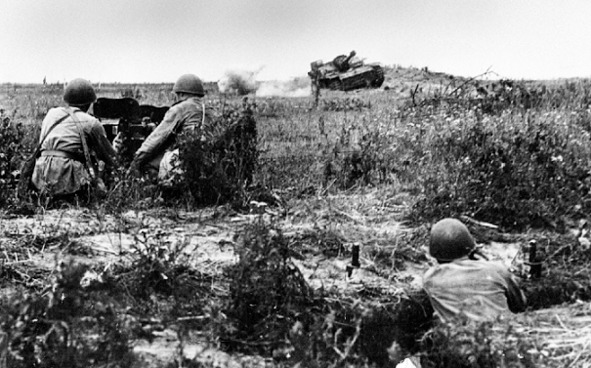
Soviet gunners with 45 mm. gun. Surroundings of Smolensk, autumn 1941

German military inspect the Soviet tank KV-2 with a broken chassis. Even without enemy shells, the heavily loaded chassis of the KV-1 and KV-2 tanks often fail
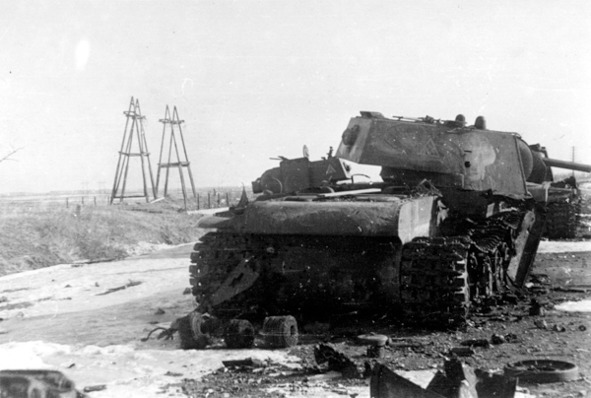
Broken, probably by hitting an air bomb, the KV-1 tank. The main advantage of the Wehrmacht at this stage of the war is the high coordination between the various kinds of troops. In the composition of infantry, tank, and other combat units, there are necessarily airmen directing the Luftwaffe to the target, without additional negotiations with the commanders of the flight units
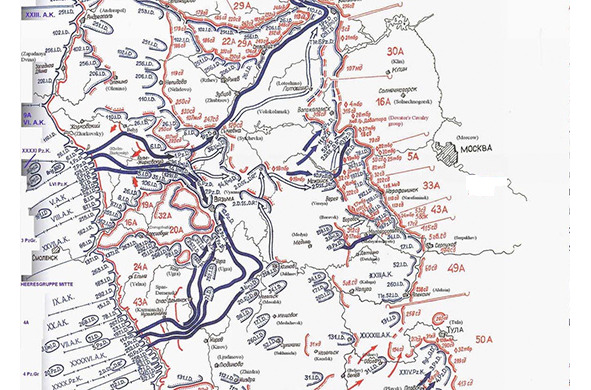
Vyazemskaya defensive operation, October 2—13, 1941 To the west of Vyazma the forces of Army Group Center are surrounded by four Soviet armies. Irrevocable losses of the Red Army – 250 thousand people, and 600 thousand prisoners. The losses of the Wehrmacht are unknown. Before Moscow there are now only scattered small groups of Red Army

Transported in freight cars, captured in Vyazma boiler Soviet soldiers. Photo on the cover of the German newspaper

Prisoners of Vyazma boiler
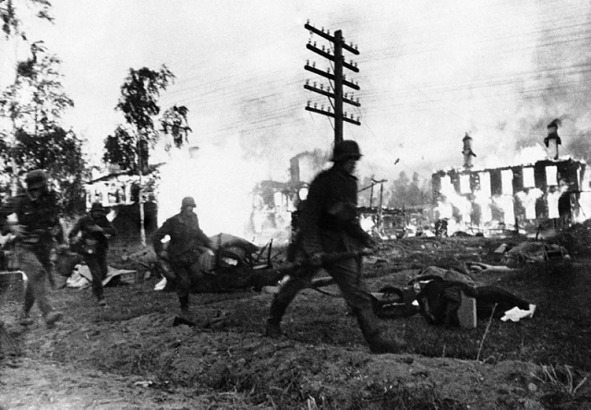
Soldiers of the Army Group “North” in the suburbs of Leningrad. The offensive is somewhat delayed and the inhabitants of the city manage to create the necessary fortifications. Also, the heavy tanks KV-1 and KV-2, produced by the Kirov plant

Since September 8, 1941, Leningrad, the second largest city in importance and importance of the USSR, as well as the adjacent territories are surrounded
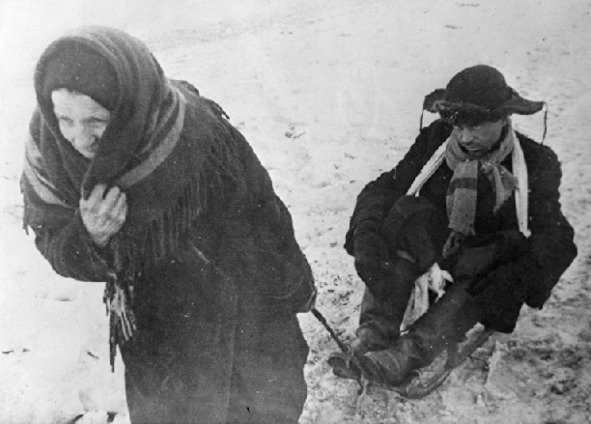
The norms for issuing bread, the main or only food product, during the first two months of the blockade are reduced by five times. Since November 20, the minimum rate of bread delivery (employees, children and dependents) is 125 grams. Workers engaged in manual labor receive 250 grams of bread a day. In the photo – probably close relatives. It is believed that men suffer hunger worse than women
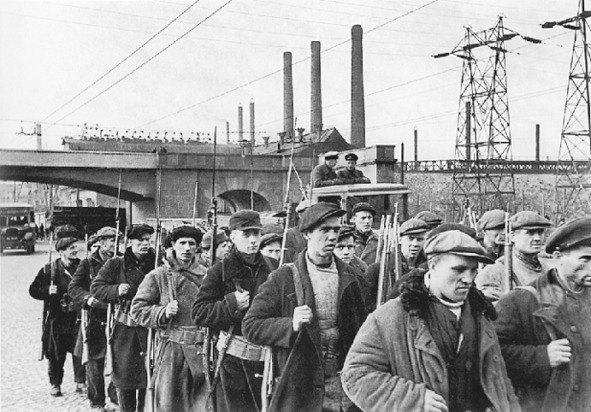
Some of the workers, not engaged in military production, go to the front. In this photo are workers of the Kirov plant. The fortification line is sometimes only 5 kilometers from important industrial sites, 16 kilometers away. from the Winter Palace

On the ice of the Ladoga Lake, in the circumvention of the positions of the Wehrmacht, the “Road of Life” is laid. Under the attacks of German aircraft, grain is imported into the city. Return flights are evacuating children. Since December 25, 1941, the rates of bread distribution have increased somewhat

Evacuation of Leningrad residents not engaged in defense and production
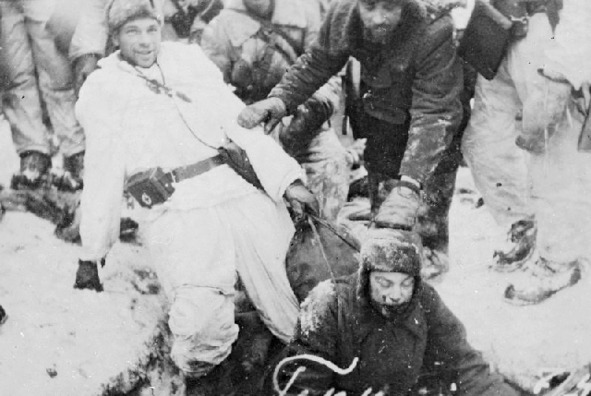
Finnish soldiers posing with torture Soviet prisoners of war, 1942. During the summer and autumn of 1941 Finland returns the territory lost in the Winter War. Further, the German-Finnish Karelian army continues the offensive, seizes Petrozavodsk and blocks Leningrad from the North. In the occupied territories, the Finns segregate the population on a national basis. Also, all responsible Soviet employees, enterprise managers, newspaper editors, policemen, etc., are sent to concentration camps. Justified hatred Bolshevik regime Finns mixed with longstanding own national aspirations. In a sense, Finland is hardly much better than fascist Germany. Ambitions of this sparsely populated country are constrained not by spiritual ideals, but perhaps only by its technical capabilities. July 30—31, an ally of the USSR, Britain, without declaration of war, inflicts air strikes on Petsamo and Kirkenes. One ship is damaged, two go to the bottom. The Air Force of England is losing 16 aircraft.December 6, 1941 Great Britain declares war on Finland.After the first defeat of the Wehrmacht, in the Battle of Moscow, Finland refuses to conduct active hostilities

German soldiers on the outskirts of Moscow. According to Hitler’s directive, the assault is conducted from September 30, 1941.
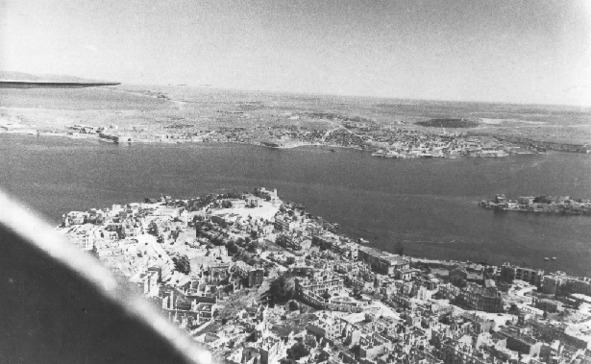
Sevastopol, 1941, the first assault, October 30 – November 21

Seamen of Sevastopol. On land, sailors form an elite infantry, fully aware of the value of combat brotherhood, and also accustomed to handling complex technology

Sevastopol, 1941

Sevastopol Air Defense Forces
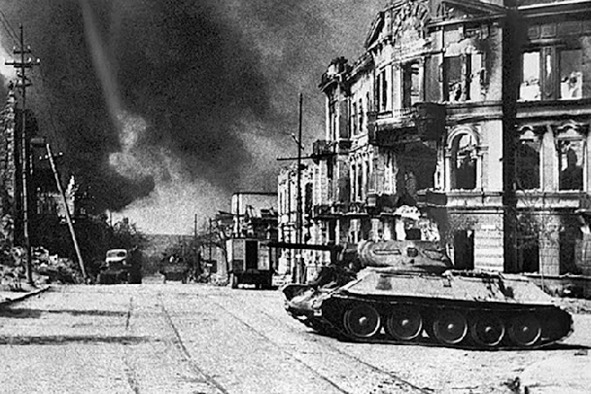
Outskirts of Sevastopol, autumn 1941
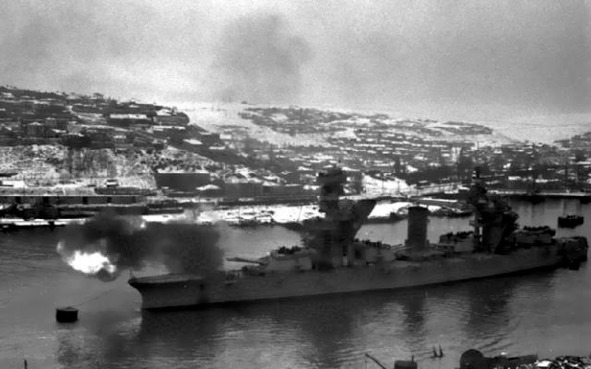
Battleship “Sevastopol” is firing. The first and the second storm of the city of military glory are broken, first of all, thanks to the artillery support of the ships in the bays
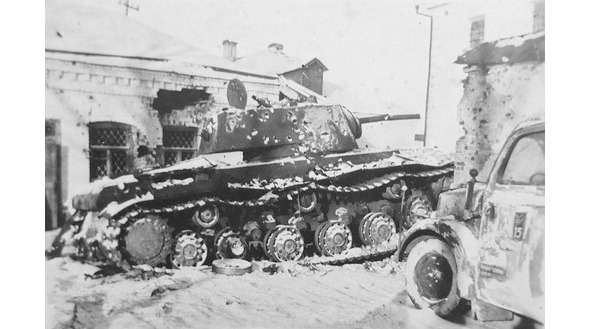
Killed the KV-1 tank with dozens of shells, in the town of Venev, Tula region
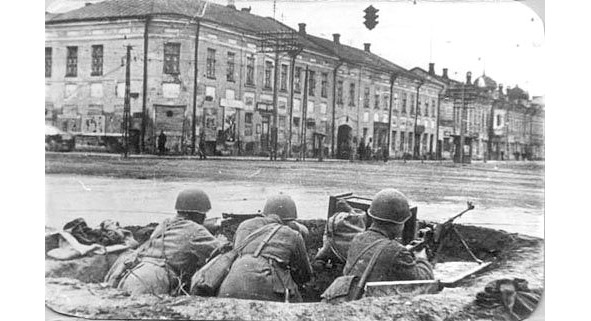
The defense of Tula, November 1941. The important center of the Soviet defense industry is practically surrounded by German units, but it keeps the siege, and does not allow the Wehrmacht to strike Moscow from the south

December 28, 1941 RKKA and the fleet landed in Kerch, a day later – in Feodosia (Crimea). This operation is quite successful. Occupying Kerch, the German division is evacuated deep into the peninsula, throwing heavy equipme

Subsequent, poorly prepared and indecisive attacks on the fortified positions of the Wehrmacht are merely depleting the mechanized parts of the Red Army.
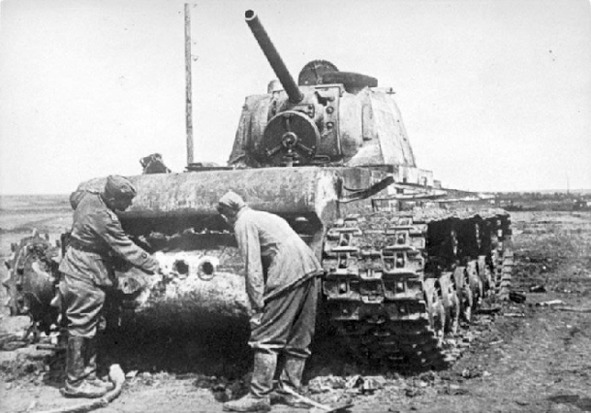
Killed the tank KV-1. District of the Old Crimea, the limit of advance of the Soviet marines

The erection of fortifications on the streets of the capital

Panic in Moscow, October 16, 1941
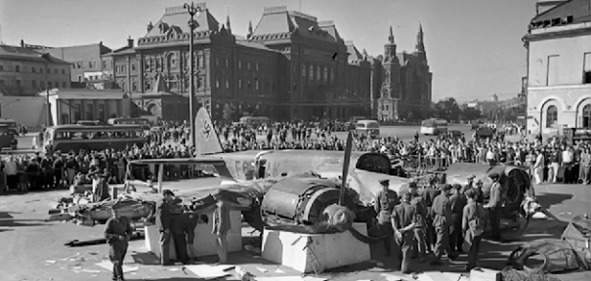
To overcome the fear of the Wehrmacht, an exhibition of disabled German military equipment is being organized in the center of Moscow
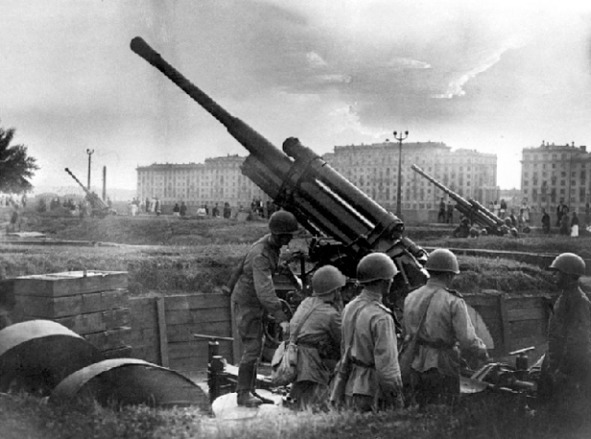
The battery is 85 mm. anti-aircraft guns in the Park of Culture and Rest. M. Gorky

Moscow, 1941. MiG-3 fighters. The capital is covered with impressive air defense forces, and Hitler’s plan to destroy the city from the air is not carried out

Two hundred thousand civilians and volunteers are mobilizing to help the Soviet Army in Moscow. Almost all of them die in the coming months
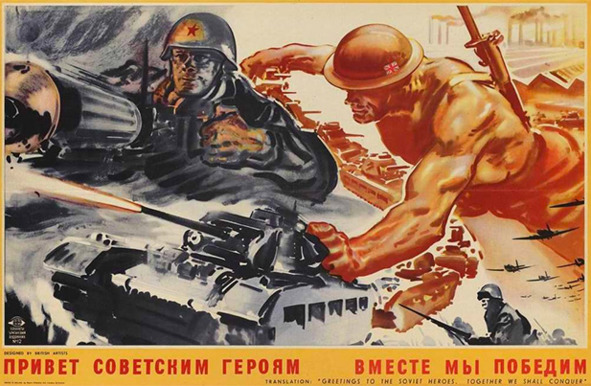
American poster in support of Lend-Lease

In November 1941, the first deliveries on lend-lease began. The country of the Soviets receives the first 670 aircraft, about 400 tanks and 3,000 other military cargoes from the United States and Great Britain. In the battle near Moscow, the armored vehicles “Valentine” and “Matilda II” account for approximately 35% of all tanks used by the Red Army. Lend-Lease aircraft, Tomahawks and Hurricanes form 16% of the air defense fleet of the capital of the capital

Moscow, November 1941. BT-7 tanks are sent to the front.
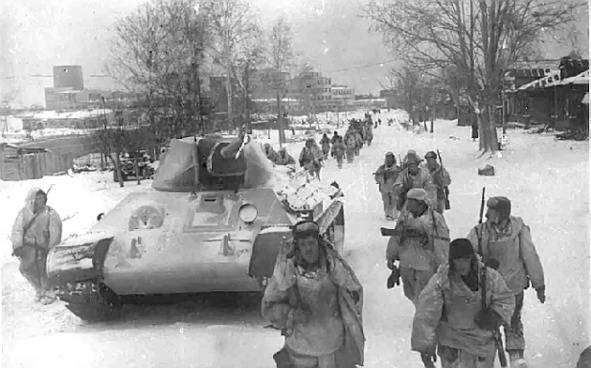
“Siberian”, in fact – the Far Eastern divisions, sent to Moscow after the assurances of scouts that there will not be any wars with Japan in the near future, represent the most prepared military formations

Moscow strategic offensive operation, November 1941

As a result of the Moscow battle, German troops were thrown 100—120 kilometers from the capital. Soviet soldiers for the first time see a significant amount of damaged and abandoned German equipment
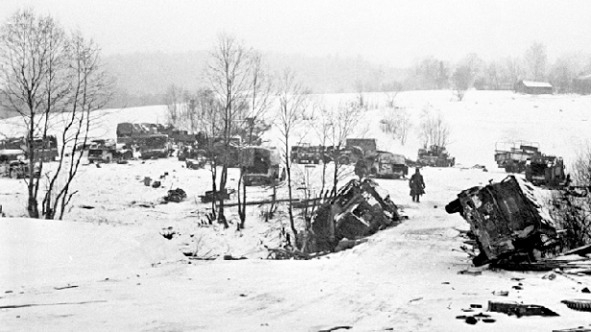
The German motorcade, broken down near Moscow

German prisoners of war. Soviet troops take German soldiers for the first time in captivity groups, 10—15 people each
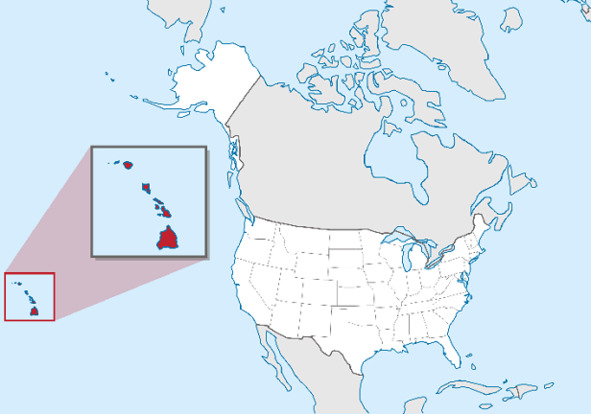
Pearl Harbor, the US Pacific military base
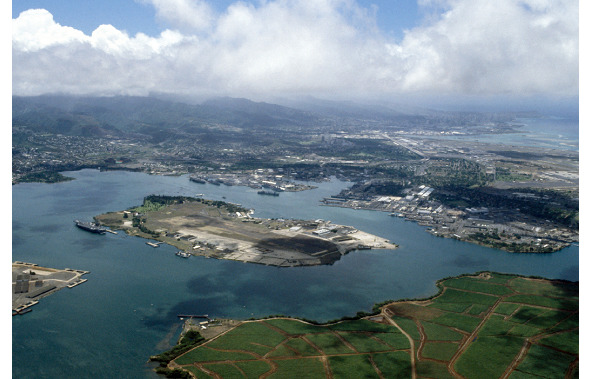
Harbor Pearl Harbor, modern photography. Approximately so, in color, almost 80 years ago, saw this all Japanese pilot
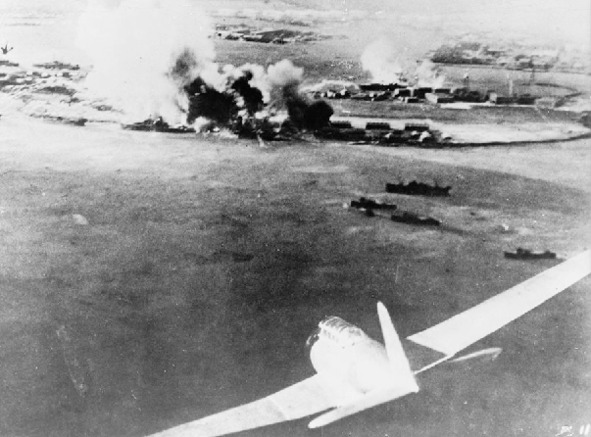
November 26, 1941, the US, seeing in the ambitions of the Pacific power threat to its security, declare Japan an ultimatum: to leave already almost conquered China, Indonesia and Korea. In response, on December 7, 1941, Japanese aircraft, with a belated declaration of war, strikes at the base of the US Navy in Hawaii (Pearl Harbor, Pearl Harbor, roughly in the middle of the Pacific Ocean). 2400 people are being killed, four battles of the First World War, four destroyers, 188 planes are sinking. Twenty-three submarines and, note, six aircraft carriers, the main strike force of the US Navy, which left shortly before the open ocean, remain intact. Losses of the Japanese side – 29 aircraft, 55 crew members, 9 submariners from five sunken ultra-small submarines. In the photo – the attack of “Zero” of the Imperial Air Force





